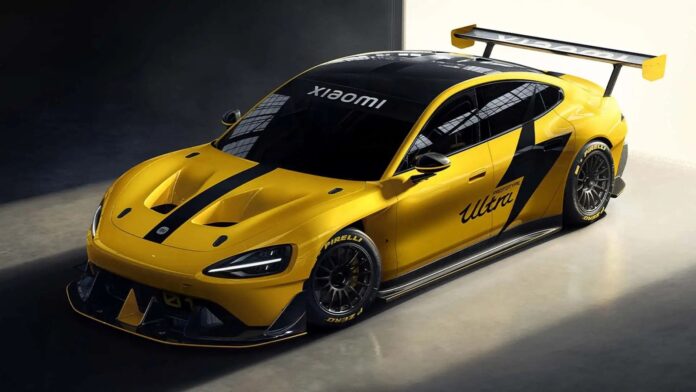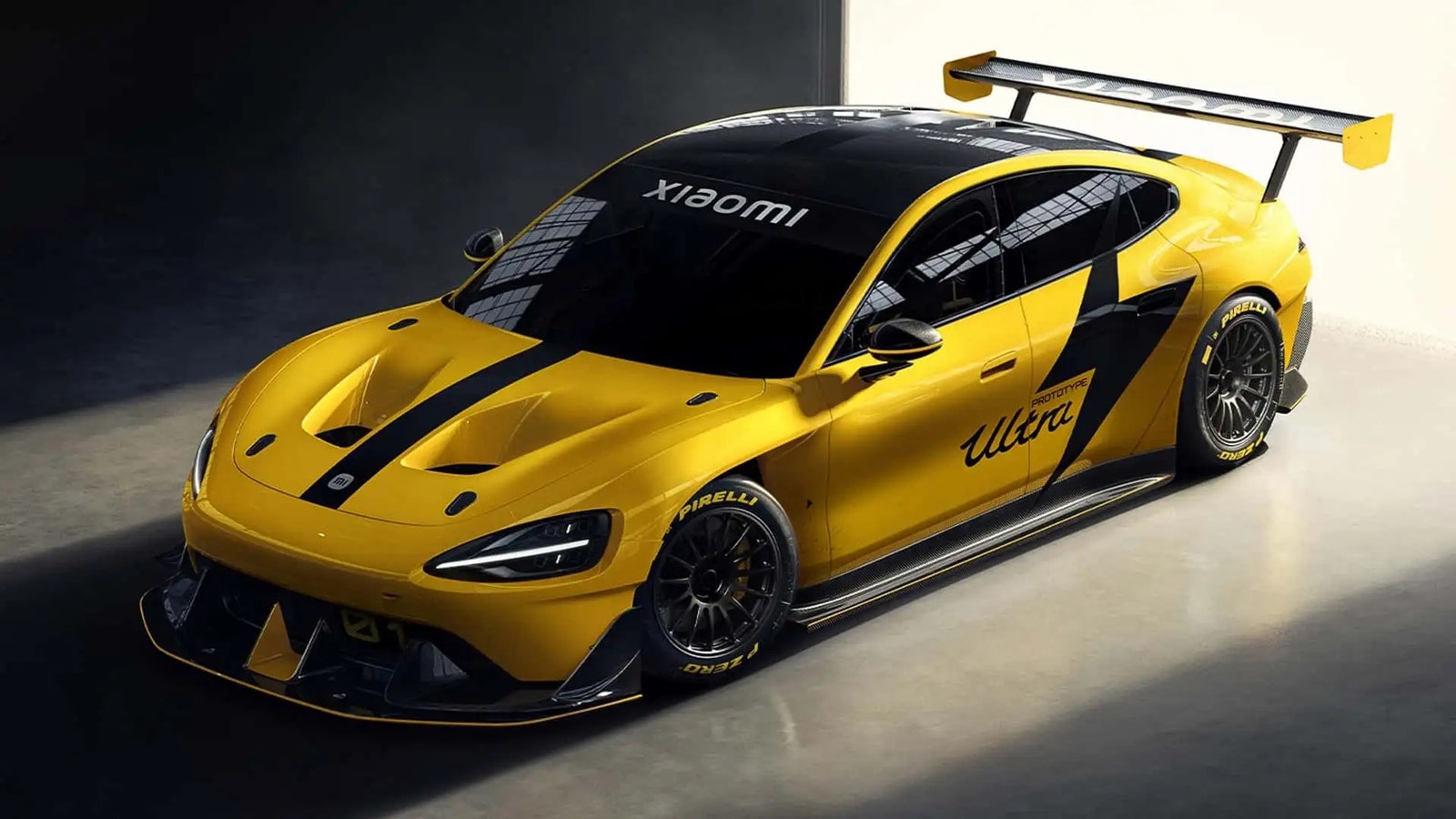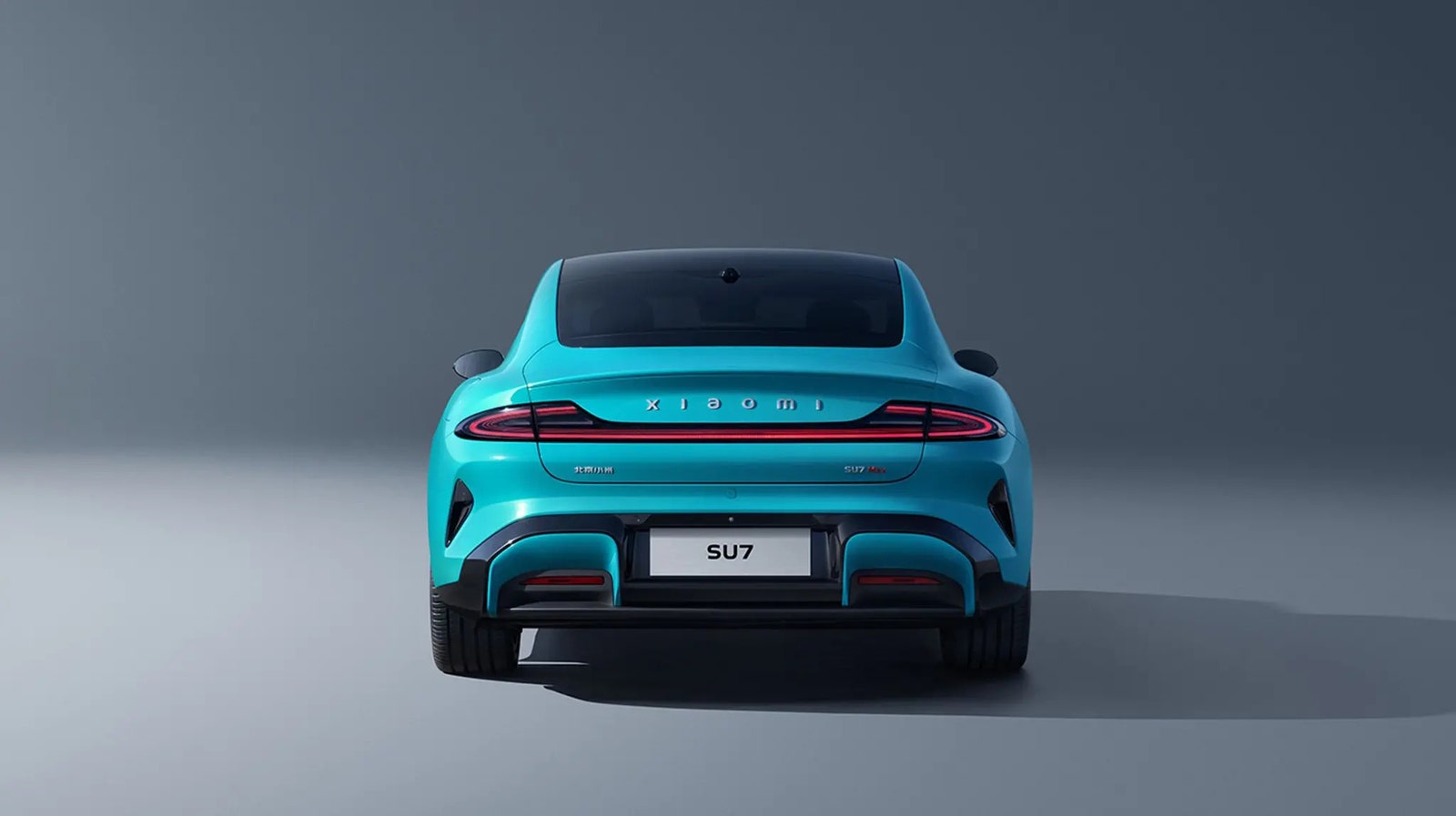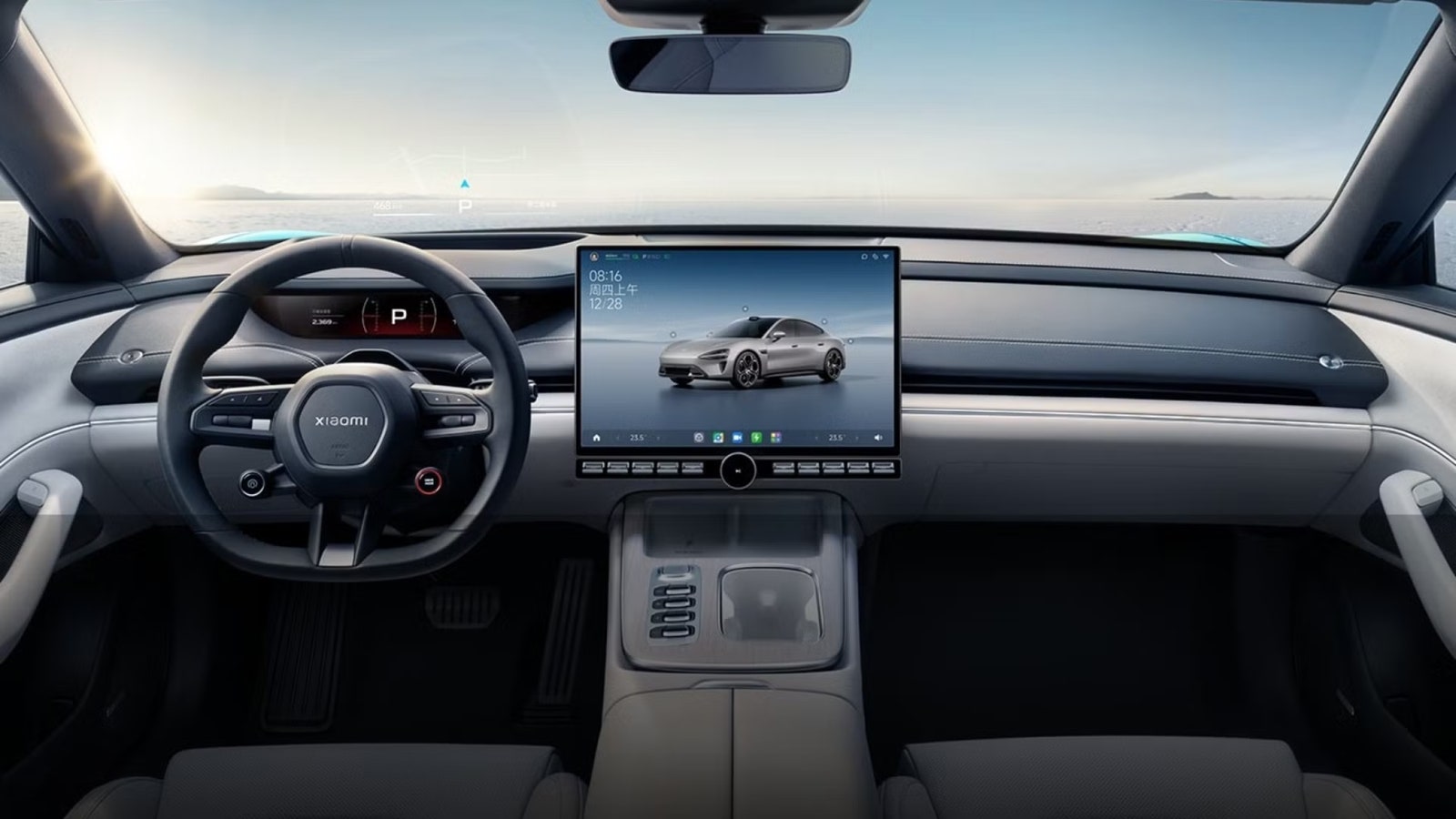You more than likely know Xiaomi, so-called Apple of China, as a maker of smartphones that offer a decent alternative to Samsung. You might also know about its smartwatches, robotic vacuums and electric scooters. Good, if often unoriginal design, sold at a competitive price.
But did you know it also sells cars? Xiaomi Auto leapt into the packed EV market only in March 2024, yet already has a hit on its hands with the SU7. An electric sedan not dissimilar to the Porsche Taycan, it attracted almost 90,000 orders within 24 hours of going on sale—a stat that likely makes it the fastest-selling car of all time.
As well as flying out the door, the SU7 flies around the racetrack, too. A pumped-up version, called the SU7 Ultra and packing more than 1,500 horsepower, set a new Nurburgring lap record in November, beating both the Rimac Nevera and Porsche Taycan Turbo GT by over 15 seconds around the 12.9-mile course. Even more remarkably, it set the 6:46.9 record on a damp track and with an apparent loss of power part-way round.
Before we get too carried away, it’s important to caveat this by saying, yes, smartphone maker Xiaomi set a stonking lap time, but it did so using a stripped-out prototype that isn’t street legal. It’s also worth stating how the Nio EP9—also an electric concept—went fractionally quicker way back in 2017, and the Volkswagen ID.R holds the outright electric lap record, at 6:05.3.
Back to the street-legal SU7. The car sold so well at launch that Xiaomi Auto has raised its 2024 delivery forecast three times since, up from an initial goal of 76,000 to 130,000 by mid-November.
According to Chinese auto industry expert Mark Rainford, that revised figure is “more than even XPeng managed to deliver in the year to September,” despite selling cars for the past six years and operating in multiple international markets. November also saw Xiaomi post a 30.5 percent increase in third-quarter revenue.
Even Ford Boss Loves Xiaomi
But don’t just look at the sales figures. Ford CEO Jim Farley recently admitted to not only driving a Xiaomi car in the US, but after six months he didn’t want to give it back. Speaking on the Everything Elecctric Show podcast in October, Farley said: “Everyone was talking about the Apple car. But the Xiaomi car, which now exists and it’s fantastic; they sell 10,000, 20,000 a month—they are sold out for six months. That is an industry juggernaut, and [it comes from] a consumer brand that is much stronger than car companies.”
“I don’t like talking about the competition so much,” continued Farley, “but I drive a Xiaomi. We flew one from Shanghai to Chicago and I’ve been driving it for six months now and I don’t want to give it up.”
The Chinese EV market is incredibly crowded, but Xiaomi’s first entry stands out owing to its premium styling (even if it appears to borrow somewhat from the Taycan) and low price. The SU7 starts from under $30,000, placing it $4,000 below the Tesla Model 3 in China. Even the hypercar-powerful SU7 Ultra seems like good value, with a production version set to cost around $112,500 when it goes on sale in March 2025.
With just one model in production, Xiaomi will already look to make full use of its own, 20,000 cars-per-month factory—itself a rarity among auto startups, who usually prefer to outsource the vast expense of building cars to others in a bid to sidestep the growing pains Elon Musk once described as “production hell”.
There is no shortage of Chinese electric car companies queuing up to take on Tesla. BYD has come closest in terms of outright sales, while under new Chinese ownership a resurgent MG has seen success by undercutting Tesla in the UK market. Of course, prohibitive tariffs mean Chinese-made cars are not viable, or indeed welcome, in the US—and remember, that includes vehicles built in China by brands from elsewhere, such as the Mini Cooper and Aceman, and the Polestar 2, at least until production in the UK and US comes online.
Even still, while Xiaomi can’t get a foothold in the US market, unless it began producing internationally, its growth has been extraordinary.
What’s Xiaomi Doing Different?
Rainford tells WIRED that, much as how Apple works, the key to Xiaomi’s success is the ecosystem. “They’ve leveraged their ecosystem of smart products for the home, which they put under the umbrella name of Mijia. This means you can also control, simply by speaking to your car or by using the touchscreen, things such as your robotic vacuum cleaner, your rice cooker and your [home] air conditioning.”
It’s even possible to answer a Mijia video doorbell from behind the wheel of a Xiaomi electric car. This might seem like an unnecessary gimmick to some Western markets, where the promise of a fully-integrated smart home has still not landed, despite the years-long efforts of Amazon, Google and, to a lesser extent, Apple. But Xiaomi is finding this ecosystem is something younger car buyers desire.
On the tight integration between Xiaomi’s cars and its other products, Rainford says: “Under the center console there’s storage points for a Xiaomi torch, and even space to store Xiaomi walkie-talkies, so you can join some kind of convoy with your buddies.”
Arguably more practical—and a move Western brands might learn from—is how Xiaomi offers a set of magnetic, clip-on switches for its SU7 car. This control unit attaches below the dashboard touchscreen, which has connections on all four sides for accepting a range of modular add-ons. It then provides the driver with a set of toggle switches and a rotating dial, so they can control key parts of the infotainment without diving into the touchscreen. If only Volvo offered such switchgear for the EX30 and its distracting display.
There’s more. Xioami’s car operating system works natively with both iOS and Android, so there’s no need to run Apple CarPlay or Android Auto over the top of the user interface. The SU7 also comes with mounts for fitting iPads or Android tablets to the back of the front seats, creating entertainment for rear passengers, and they can all be connected to the car’s operating system. “They’re the only brand currently doing this,” Rainford says.
Away from the tech, Xiaomi should also be praised for its performance efforts. The upcoming SU7 Ultra packs a triple-motor drivetrain with more than 1,500 horsepower—Bugatti Chiron levels of power—but with a sensible, four-door sedan body that will see Xiaomi square up to Mercedes AMG and BMW M cars.
Porsche should to be worried, too, as its Chinese sales were down 29 percent in the first nine months of 2024, compared to the previous year, with the electric Taycan hit particularly hard. To that end, Rainford points out how Xiaomi is ready to make money from “the wave of young Chinese consumers who have Xiaomi products at home, who think the SU7 is cool, who want to be different from their parents, and who trust in the new Chinese cars. They’re going to be buying SU7s, not Mercedes EQEs or even E-Clases—and down the line that will affect your big three German brands”.
What Comes Next for Xiaomi?
Reportedly, there are two new cars in the pipeline. The first is known as the MX11 and is expected to be a Tesla Model Y-rivalling electric SUV with a design that borrows from the Ferrari Purosangue, giving it a sleek, moderately high-riding profile. Camouflage test vehicles have been spotted ahead of an expected launch during the first quarter of 2025. If it follows the SU7’s timeline, then sales will begin just days after the car is revealed—an approach somewhat different to that of Tesla, whose 2020 Roadster is still yet to arrive.
That car will rely on the completion of F2, the name of the second phase of Xiaomi’s car factory, which is due to happen in the summer of 2025.
Xiaomi’s next move from there is less clear, with claims of an extended-range electric vehicle (EREV) in the works. Thought to be a larger SUV than the MX11, this would potentially be sold as a pure EV, but also as an EV with a small engine that acts as an on-board generator, as was once offered with the BMW i3. Codenamed the N3, this car has also been spotted in camouflaged prototype form, and is expected to land at some point in 2026.
As Ford boss Farley alludes to, all of this gives a tantalizing glimpse of what an Apple car could have been; a vehicle tightly integrated with its user’s phone, computer, calendar, credit card and practically their entire digital life. An EV that looks good, creates synergy by logging into the digital services target customers already use, and not only works with, but adds new functionality to tech products they already own.
Nine months after Apple shuttered its failed Project Titan, the iCar is finally here, but it comes from Beijing, not the Bay Area.
Source : Wired









